| Selo | THiNKaha,Inc. |
|---|---|
| Edição | 0 |
| Idioma | Inglês |
| Autores | George D. Gopen |
| Acabamento | Capa Comum |
| Quantidade de Páginas | 130 |
| Origem | Literatura Estrangeira |
 Der Ausländer (o estrangeiro) - Livro de exercícios
Der Ausländer (o estrangeiro) - Livro de exercícios
Sprache&Wissen
R$ 247,00 ou até 3x sem juros Foundation 2
Foundation 2
HC School
R$ 247,00 ou até 3x sem juros Fluency 01 - Teachers Book
Fluency 01 - Teachers Book
HC School
R$ 287,00 ou até 3x sem juros Fotografias de intérpretes: Em busca de vidas perdidas
Fotografias de intérpretes: Em busca de vidas perdidas
Lexikos
R$ 77,90 à vista Sociedade e literatura no Brasil
Sociedade e literatura no Brasil
Fundação Editora da Unesp
R$ 59,00 à vista Subjetividade, argumentação, polifonia
Subjetividade, argumentação, polifonia
Fundação Editora da Unesp
R$ 55,00 à vista Me and My Alphabet Book
Me and My Alphabet Book
Underline Publishing LLC
R$ 59,99 à vista Uso de canções nas aulas de inglês e espanhol
Uso de canções nas aulas de inglês e espanhol
Telha
R$ 42,00 à vista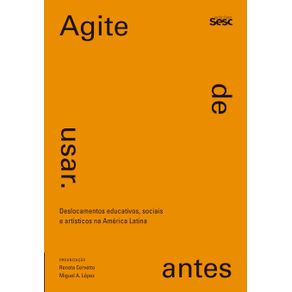 Agite antes de usar
Agite antes de usar
Edições Sesc
R$ 55,00 à vista Ciberbullying
Ciberbullying
Penso
R$ 158,00 ou até 3x sem juros Educação quilombola
Educação quilombola
Editora Jandaíra
R$ 52,00 à vista Espanhol para negócios
Espanhol para negócios
InterSaberes
R$ 93,60 à vista El Señor Presidente - Nivel 6
El Señor Presidente - Nivel 6
SANTILLANA
R$ 60,00 à vista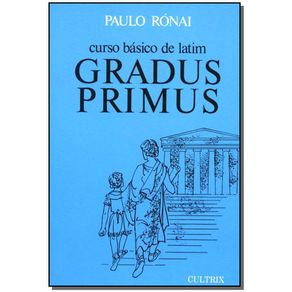 Curso Básico de Latim-gradus Primus
Curso Básico de Latim-gradus Primus
Cultrix
R$ 34,90 R$ 28,62 à vista Lapprentissage du français en vue de lintégration
Lapprentissage du français en vue de lintégration
Dialética
R$ 57,65 à vista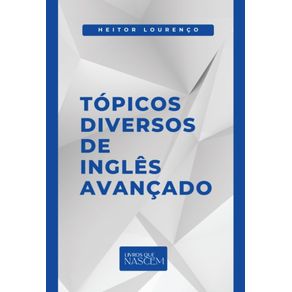 Tópicos diversos de inglês avançado
Tópicos diversos de inglês avançado
Printcenterpoa
R$ 59,90 à vista Frestas e arestas - A prosa de ficção do romantismo na Alemanha
Frestas e arestas - A prosa de ficção do romantismo na Alemanha
UNESP
R$ 96,00 à vista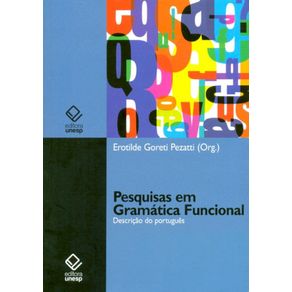 Pesquisas em gramática funcional - Descrição do português
Pesquisas em gramática funcional - Descrição do português
UNESP
R$ 84,00 à vista Gramática de Inglês Revolution (Nível intermediário): Níveis B1 e B2 completos
Gramática de Inglês Revolution (Nível intermediário): Níveis B1 e B2 completos
Sprache&Wissen
R$ 247,00 ou até 3x sem juros Sophie and Kegan
Sophie and Kegan
HAIKAI EDITORA
R$ 60,00 à vista Me and My Alphabet Book
Me and My Alphabet Book
Underline Publishing LLC
R$ 59,99 à vista Glossário de locuções para aprendizes brasileiros de espanhol como língua estrangeira
Glossário de locuções para aprendizes brasileiros de espanhol como língua estrangeira
Dialética
R$ 64,90 à vista Estratégias de interação oral em língua espanhola
Estratégias de interação oral em língua espanhola
Dialética
R$ 57,65 à vista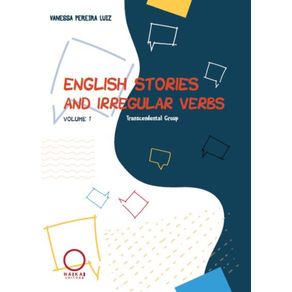 English Stories and irregular verbs
English Stories and irregular verbs
HAIKAI EDITORA
R$ 39,99 à vista Ciberbullying
Ciberbullying
Penso
R$ 158,00 ou até 3x sem juros Libras
Libras
InterSaberes
R$ 42,90 à vista Libras
Libras
InterSaberes
R$ 76,90 à vista El Señor Presidente - Nivel 6
El Señor Presidente - Nivel 6
SANTILLANA
R$ 60,00 à vista Lapprentissage du français en vue de lintégration
Lapprentissage du français en vue de lintégration
Dialética
R$ 57,65 à vista Dúvidas em Português Nunca Mais - 04Ed/20
Dúvidas em Português Nunca Mais - 04Ed/20
Lexikon
R$ 71,00 à vista Foundation 2
Foundation 2
HC School
R$ 247,00 ou até 3x sem juros Frestas e arestas - A prosa de ficção do romantismo na Alemanha
Frestas e arestas - A prosa de ficção do romantismo na Alemanha
UNESP
R$ 96,00 à vista Fluency 01 - Teachers Book
Fluency 01 - Teachers Book
HC School
R$ 287,00 ou até 3x sem juros Business 01
Business 01
HC School
R$ 287,00 ou até 3x sem juros Beginner 02
Beginner 02
HC School
R$ 287,00 ou até 3x sem juros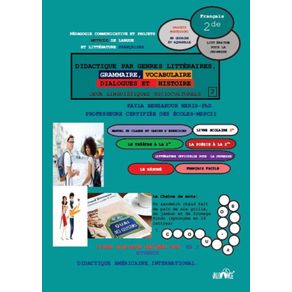 Didactique par genres littéraires, Grammaire, Vocabulaire, Dialogues et Histoire: Jeux linguistiques socioculturels
Didactique par genres littéraires, Grammaire, Vocabulaire, Dialogues et Histoire: Jeux linguistiques socioculturels
Alcance
R$ 190,99 ou até 3x sem juros Fotografias de intérpretes: Em busca de vidas perdidas
Fotografias de intérpretes: Em busca de vidas perdidas
Lexikos
R$ 77,90 à vista Foco narrativo e fluxo da consciência
Foco narrativo e fluxo da consciência
Fundação Editora da Unesp
R$ 44,00 à vista Glossário de locuções para aprendizes brasileiros de espanhol como língua estrangeira
Glossário de locuções para aprendizes brasileiros de espanhol como língua estrangeira
Dialética
R$ 64,90 à vista English Stories and irregular verbs
English Stories and irregular verbs
HAIKAI EDITORA
R$ 39,99 à vista Compreensão oral em língua inglesa
Compreensão oral em língua inglesa
InterSaberes
R$ 48,20 à vista Around the world
Around the world
InterSaberes
R$ 79,00 à vista Libras
Libras
InterSaberes
R$ 76,90 à vista Curso Básico de Latim-gradus Primus
Curso Básico de Latim-gradus Primus
Cultrix
R$ 34,90 R$ 28,62 à vista Vocabulario Ortografico da Lingua Portguesa
Vocabulario Ortografico da Lingua Portguesa
Lexikon
R$ 119,00 ou até 2x sem juros